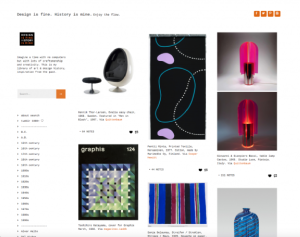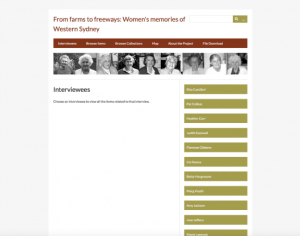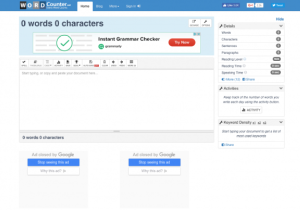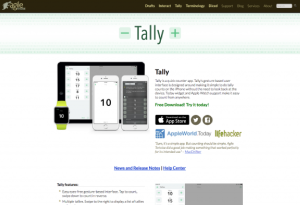Research and Education
Back to Top
|
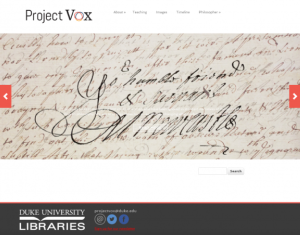 |
|
Project Vox
|
Philosophy |
|
In the seventeenth century, Margaret Cavendish authored popular plays, poetry, and fiction, as well as a number of oft-overlooked works of natural philosophy. In 1740, Emilie Du Chatelet published Institutions de Physique, a work that was widely circulated at the time. Despite their contributions, Cavendish, Du Chatelet, and other women philosophers are often overlooked in courses about Early Modern Philosophy. Project Vox is an ongoing initiative by scholars, librarians, and students at Duke University to educate the public about the contributions of these female philosophers and to provide philosophy instructors with resources to integrate these philosophers into the classroom. Visitors may want to start by browsing this website's timeline, which provides basic biographical information about major female philosophers alongside an overview of intellectual and political developments in early modern Great Britain and France. More detailed information about four philosophers - Cavendish, Du Chatelet, Anne Conway, and Damaris Cudworth Masham - can be found under the Philosopher tab. Here, visitors will find a more detailed biography of each philosopher, along with extensive primary and secondary source guides to their work and links to online resources. The Project Vox team is also working to create a set of teaching guides for each philosopher, so stay tuned. [MMB] |
|





|
|
 |
|
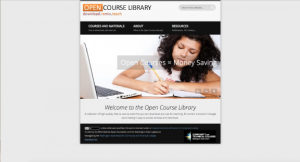 |
|
Open Course Library
|
Educational Technology |
|
From the Washington State Board of Community and Technical Colleges comes the Open Course Library, an extensive collection of courses and course materials (such as syllabi, classroom handouts, readings, multimedia resources, and assignments) for use by college-level students and instructors. As the authors of this website emphasize, these materials are not intended to replace classroom instruction. Rather, these materials are made available in order to provide affordable classroom materials for students and resources for faculty members to consider integrating into existing courses. A central stated goal of the Open Course Library is to reduce costs to students; all courses included here can be taught without a textbook or utilize textbooks that cost $30 or less. As of this write up, the Open Course Library features over 80 courses, including courses in English composition, symbolic logic, mathematics, and foreign languages. All course materials can be easily accessed as Google Docs. [MMB] |
|





|
|
 |
|
Hollywood Goes to War
|
Arts |
|
Created by public history students at Kennesaw State University, Hollywood Goes to War is a multimedia exhibit highlighting the role that Hollywood played in the U.S. homefront during World War II. Visitors can explore the exhibit through a variety of themes, including American Society, Censorship & Conflict, WWII Films, and Film & Memory. As this exhibit illuminates, the U.S. government viewed film as an important influence on both national and international perspectives of the United States during the war. In 1941, the U.S. established the Bureau of Motion Pictures (BMP), which evaluated the portrayals of the United States and other nations. These evaluations, in turn, influenced a film's international distribution. In the exhibit, visitors can read the BMP's report of Casablanca, which notes that "the film presents an excellent portrait of the spirit of the underground movement." Other exhibit items include a video clip of Franklin Roosevelt's 1941 address to the Academy Awards, a 1942 newsreel featuring enlisted servicemen Clark Gable and Jimmy Stewart, and a number of film posters and photographs. In addition, high school educators can find an extensive teacher's guide by selecting the For Teachers link on the homepage. Meanwhile, researchers can find additional primary source material via the For Scholars link. [MMB] |
|





|
|
 |
|
Virginia Department of Health: Data Portal
|
Health |
|
The Virginia Department of Health created this extensive data portal in order to "provide a convenient access point for health-related data for Virginia." This data, which is presented via a number of accessible maps, interactive infographics, and tables, can be browsed by categories including Demographics, Health Behavior, Maternal & Child Health, and Drinking Water. This data collection will be of interest to public health researchers and instructors alike. The level of detail of this data, combined with its user-friendly presentation, make it an excellent research tool to incorporate into a health or social science classroom. While all included data is specific to the state of Virginia, the universal import of the issues addressed here gives this portal a broader appeal. This webpage also contains a helpful resource list of Other Sources & Reports from the Virginia Department of Health. [MMB] |
|





|
|
 |
|
Learnhigher: Free teaching & learning resources for staff in UK higher education
|
Educational Technology |
|
Learnhigher is a UK-based organization that seeks to foster "the development and dissemination of high quality, peer-reviewed resources for learning development in the higher education sector." With financial support from the Higher Education Funding Council for England, Learnhigher seeks to be a "One Stop Swap Shop" for educational resources developed by educational institutions across the UK. Here, educators will find study guides, classroom handouts, websites, podcasts, and classroom activities designed to help instructors support college students in developing a number of skills, including research, academic writing, and collaborative learning. Many of these resources are intended for classroom use, including helpful study guides for writing, a handbook to help students approach academic reading, and in-class activities to facilitate student reflection on their time management skills. Other resources are intended to help college-level instructors reflect on their current curriculum and pedagogy practices and learn new approaches. For example, instructors can check out Top 10 Tips on Deterring Plagiarism or view slides from a professional development workshop on assessing student work. Instructors can browse these resources by topic, including Research Skills, Writing at University, and Employability. [MMB] |
|





|
|
 |
|
Biology Corner: Ecology Lesson Plans
|
Science |
|
From biology teacher Shannon Muskopf's extensive website for biology teachers and students, Biology Corner, comes this collection of lesson plans, classroom activities, and PowerPoint presentations related to Ecology and Environmental Issues. Guided by a student-centered pedagogy, many of these lessons include in-class simulations or online virtual labs. For example, in the lesson Estimating Population Size, students learn how biologists capture and mark select animals in order to gauge their population via an online Biology Corner simulation or by simulating the measurement process using beans, beads, or pennies. Meanwhile, another classroom activity uses cards to help students evaluate how predator and prey relationships shift over time. Other topics addressed in these lessons and activities include biomes, random sampling, "designer" dogs, and human population growth. These lessons can be easily downloaded as PDFs and incorporated into life science or biology classrooms or in community-based learning settings. [MMB] |
|





|
|
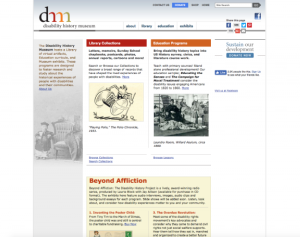 |
|
Disability History Museum
|
Social studies |
|
The Disability History Museum is a digital museum that strives to "foster a deeper understanding about how changing cultural values, notions of identity, laws and policies have shaped and influenced the experience of people with disabilities, their families and their communities over time." A project of the educational media organization Straight Ahead Pictures, the Disability History Museum contains an extensive collection of materials relating to disability throughout nineteenth, twentieth, and twenty-first century U.S. history. These materials, which are drawn from a number of contributing museums and libraries, can be browsed through the Library tab. Here, visitors can browse the collection Topic List (e.g. Civil Liberties & Rights, Women & Gender, Diagnoses & Diseases) or Keyword List (e.g. American Braille Press, Medicare, War of 1812) and filter their results by document type or date. This collection features numerous photographs, articles, speeches, reports, and more that illustrate both the experiences of individuals with disabilities throughout history as well as changing social and political conceptions of disability. In the Education section, instructors will find resources to incorporate disability history into their classrooms, including seven complete lesson plans. (At the time of this write-up, the Exhibition tab is "in development;" however, the rest of this website is fully-functioning.) [MMB] |
|





|
|












